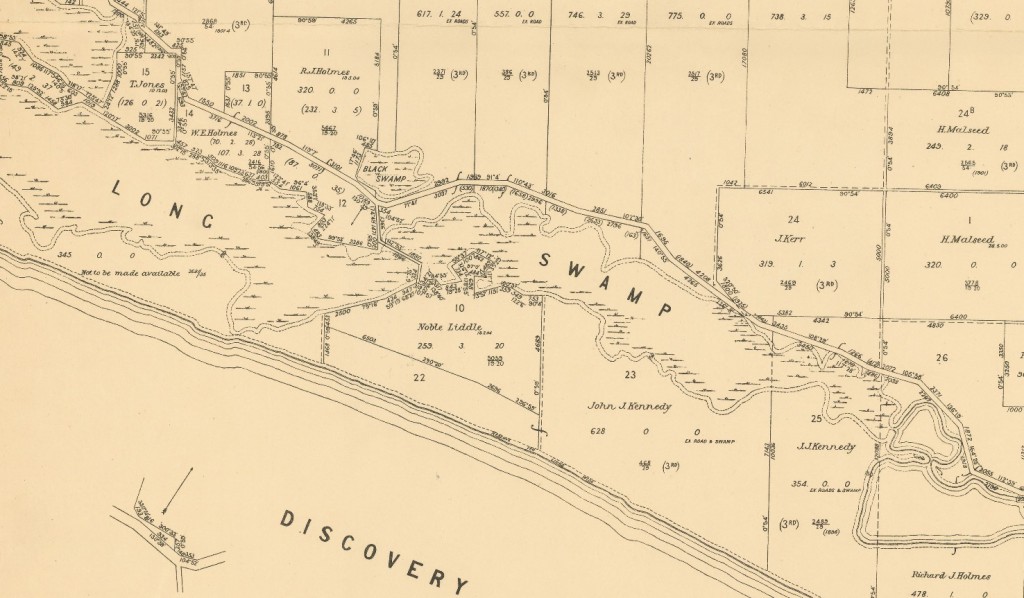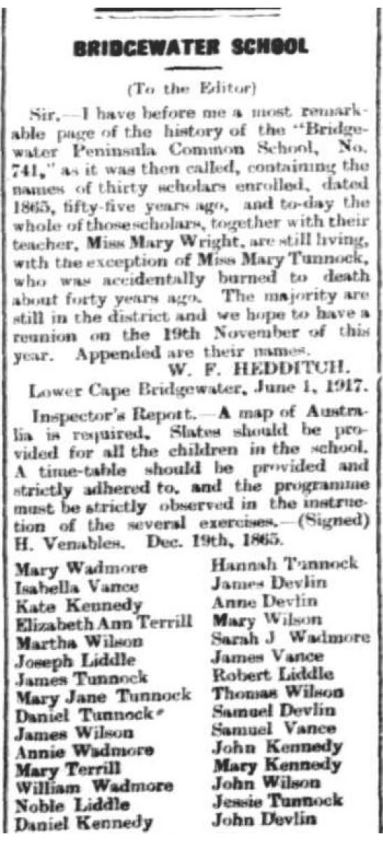Long Swamp history: so how did “Nobles Rocks” get its name?
Like many features in our region, Nobles Rocks are named after a past lessee of a nearby parcel of land; a man with an unusual but memorable name – Noble Liddle.
Noble was born on the 30th of Aug 1856 (one of several children to his parents Robert and Mary Ann Liddle) and was christened on the 5th of Oct 1856 at St. Stephens, Portland. The church was quite a new building at that time, with the foundation stone laid the previous year (1855) on March the 24th.
Noble went to the Bridgewater Peninsula Common School (State School #741), after his father Robert took an active role in the establishment of the new school – in fact he laid the foundation stone for the new school building in a small ceremony on the 8th of December 1864.
Noble was one of 30 children enrolled in 1865, a list that also included his brothers Joseph and Robert. A full list of the original students was later sent into the Portland Guardian by William Hedditch in 1917, a Cape Bridgewater local with a strong interest in local history (as we learned through the Lake Moniboeng naming story).
Noble went on to become an assistant stock-keeper on runs in the Kentbruck area, and later a laborer and grazier with his own selection of land. That parcel of land, shown below in a map from 1913 and that has since been incorporated into what is now Discovery Bay Coastal Park, is how nearby “Nobles Rocks” (situated where the coast slightly protrudes) got its name. You’ll also see an early outline of Lake Moniboeng on the far right of this image, showing where spring water from the Lake exited through a narrow flowpath to the north and then west into Long Swamp proper.

The parcel of land selected by Noble Liddle, to the east of present day “Nobles Rocks”, bordering Long Swamp.
Noble had an eventful life, with 2 reported falls from his horse (in 1901 and 1907), appearing twice as a witness in court cases (in 1897 and 1905) and finding himself at the centre of an unfolding drama in 1899 when a six year old girl (daughter of Thomas Jones from Nelson) went missing near his property. This emergency lead to a search being coordinated out of Noble’s hut. It turned out that after realising she had lost her siblings, who had gone over the dunes to see the beach, the girl started walking towards home along the coast, and was found by a young man called Ronald Clarke who was on his way out of Nelson to join the search on horseback. When found, she was only 2 miles from Nelson, 30 hours after she first disappeared. Although she was in good health and apparently quite calm, I am sure the same cannot be said for her parents!
Noble’s father Robert died in 1885, his mother in 1918, and he died at 70 years of age in 1926. The last of his siblings (Robert) died in 1942.
The coast and Long Swamp have certainly changed a lot in the hundred years since Noble Liddle lived simply in his hut and ran cattle on his small selection of coastal land. If you have any old descriptions or photos of the environment in this fascinating part of the world – please get in touch – we’d love to hear from you!


